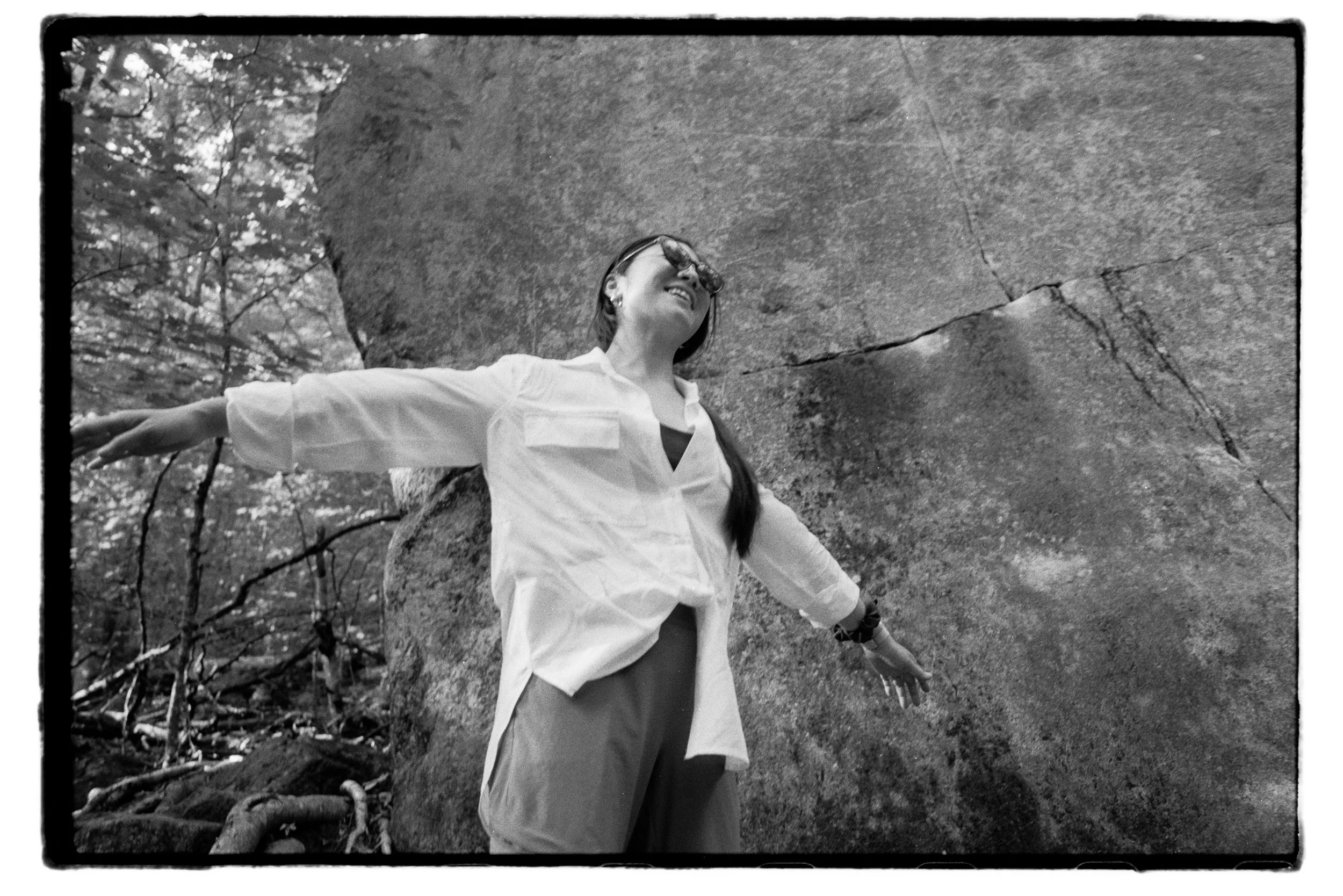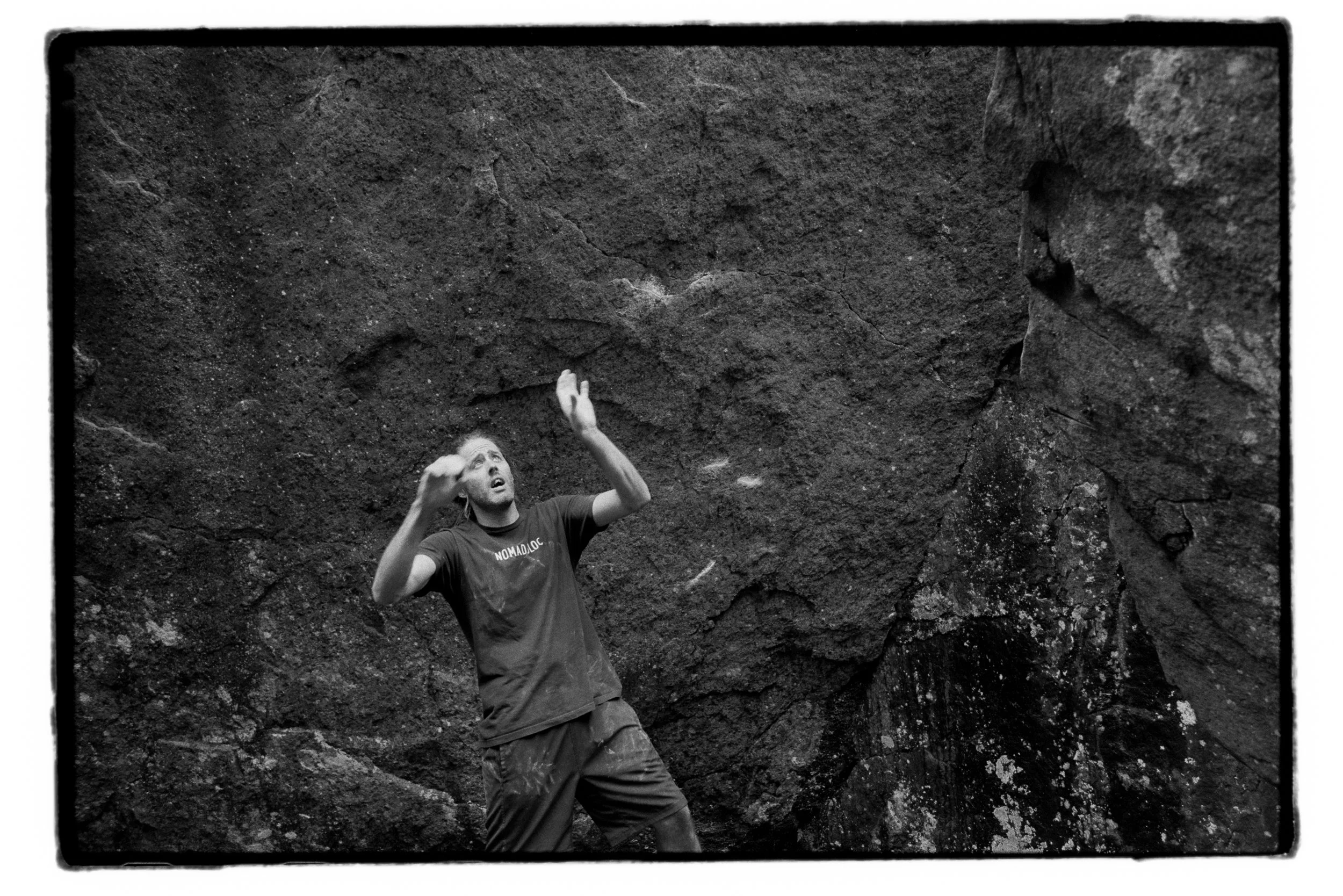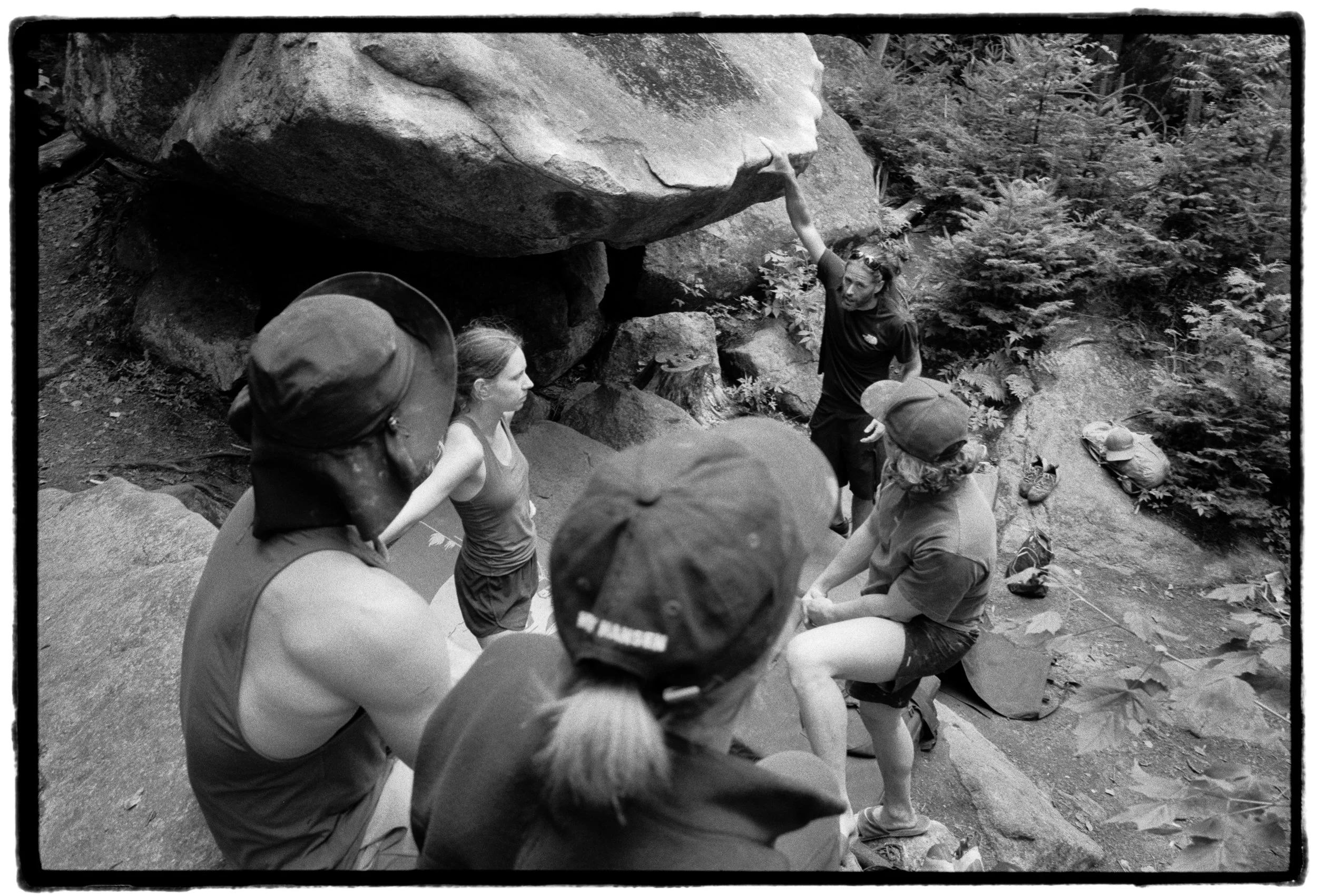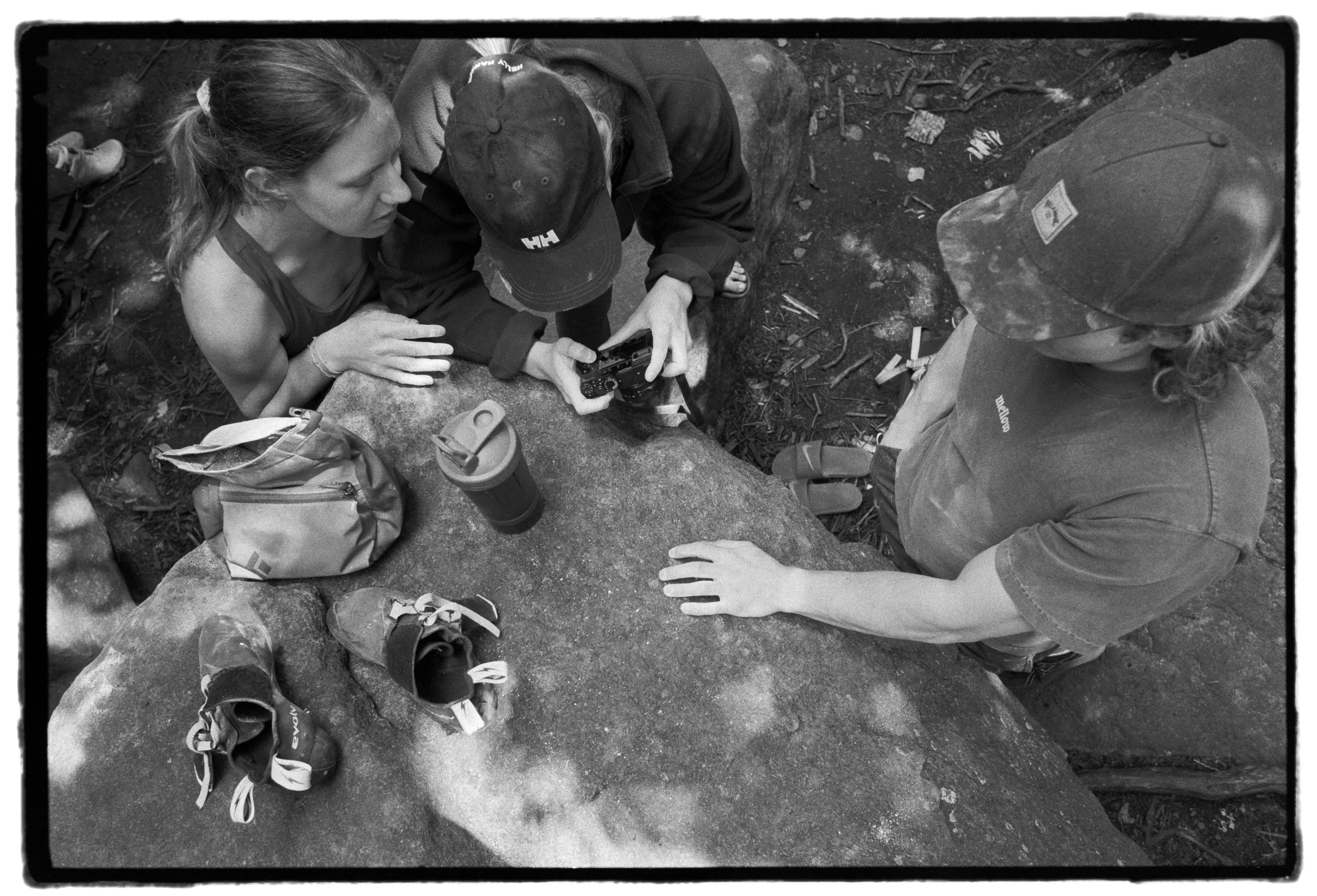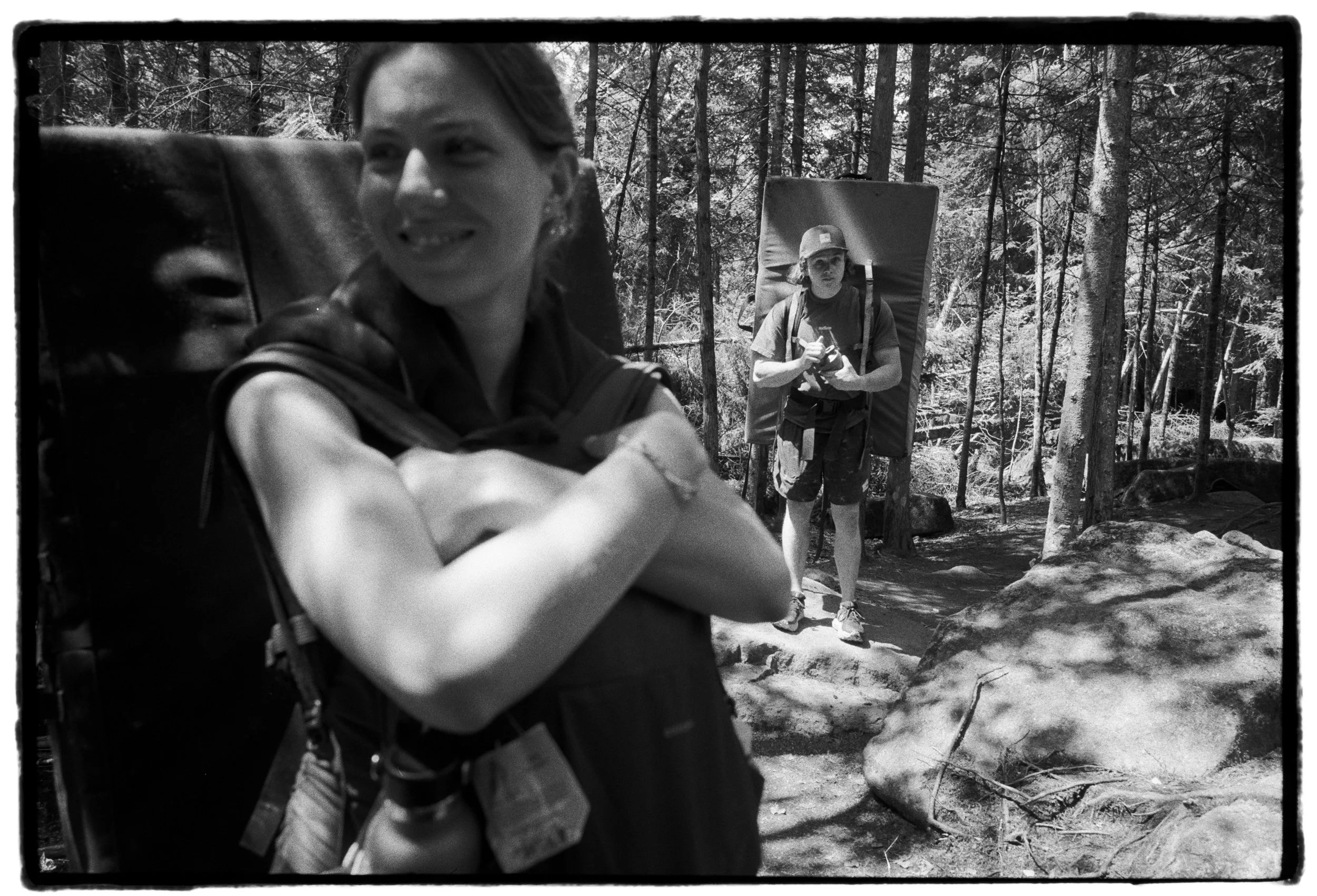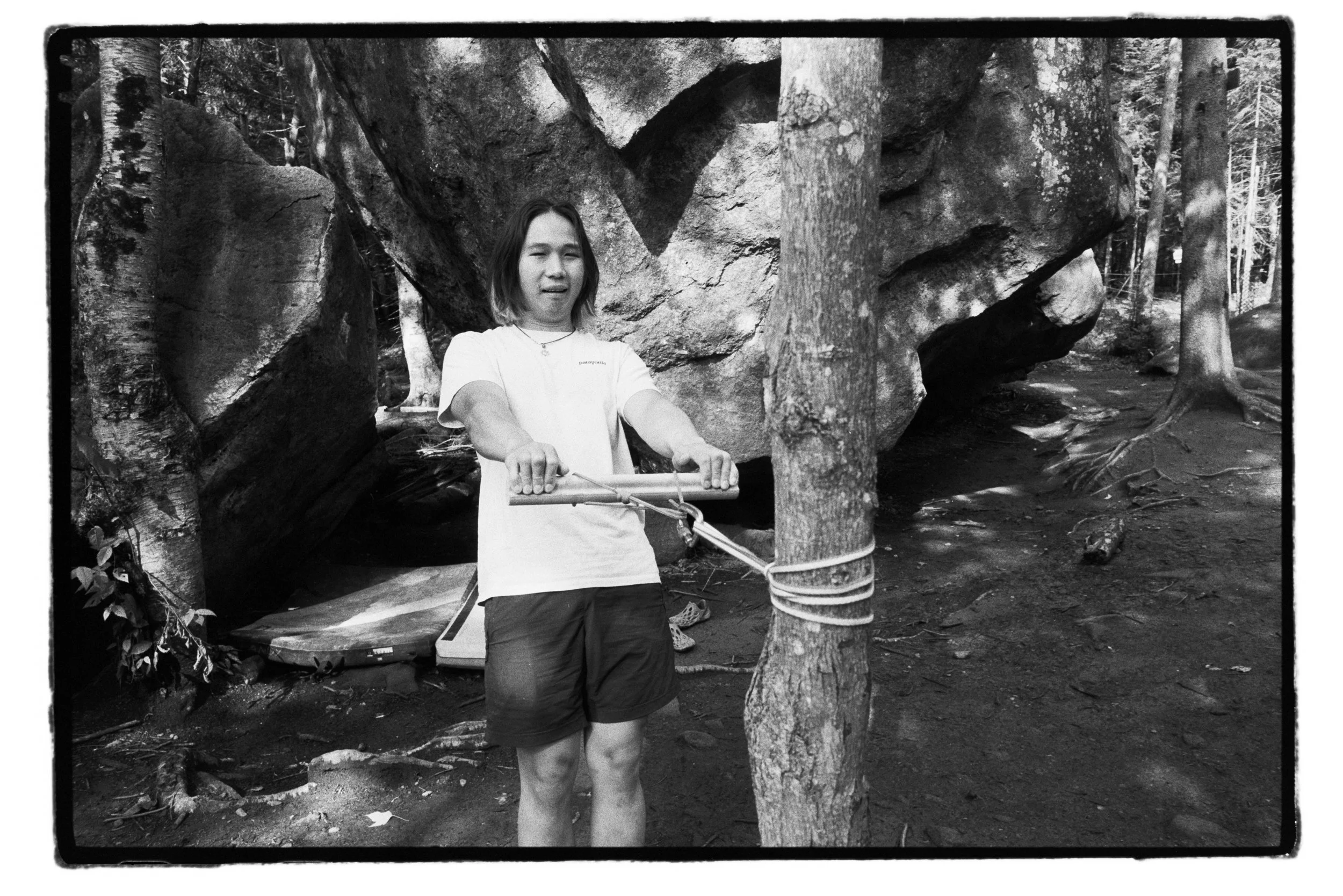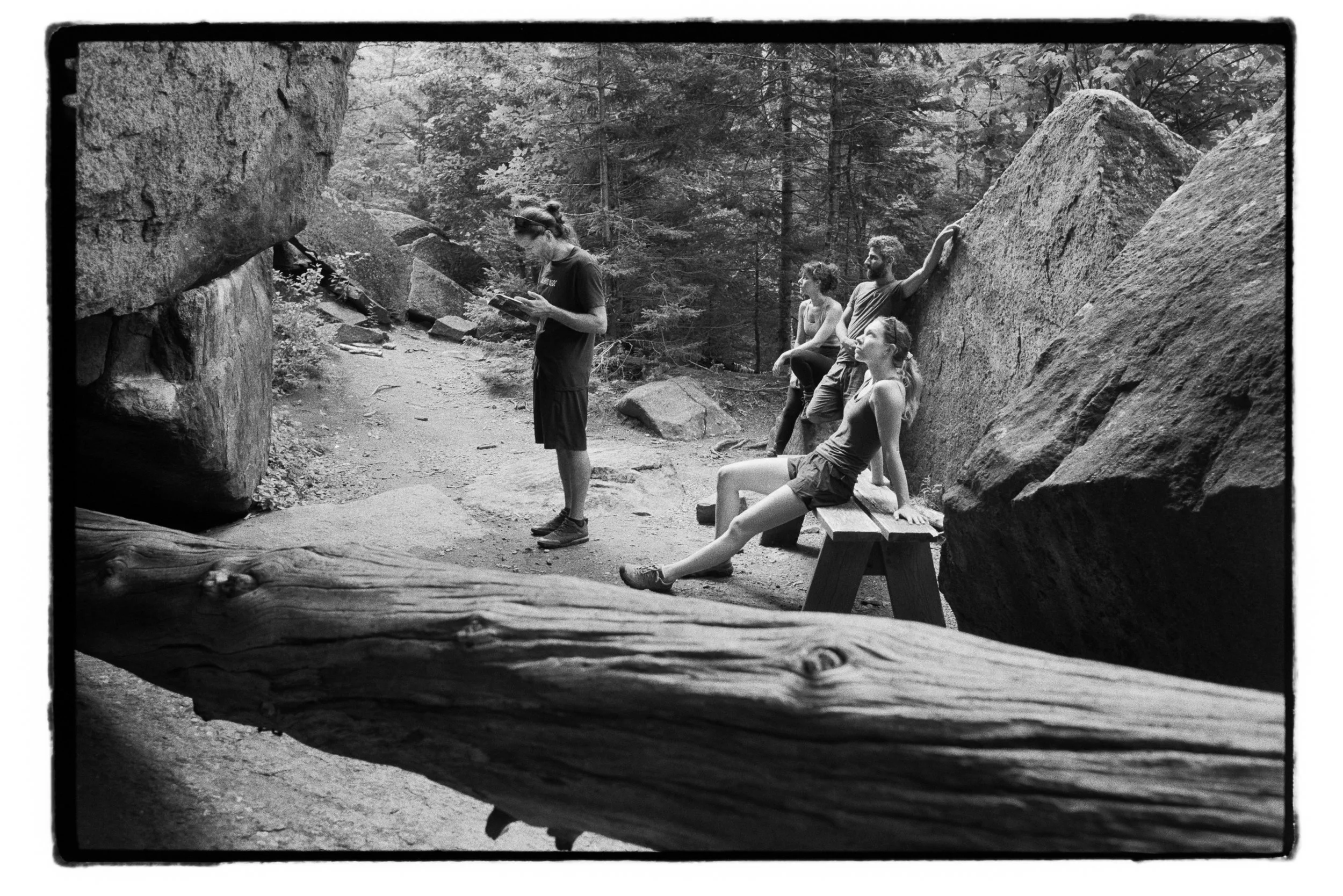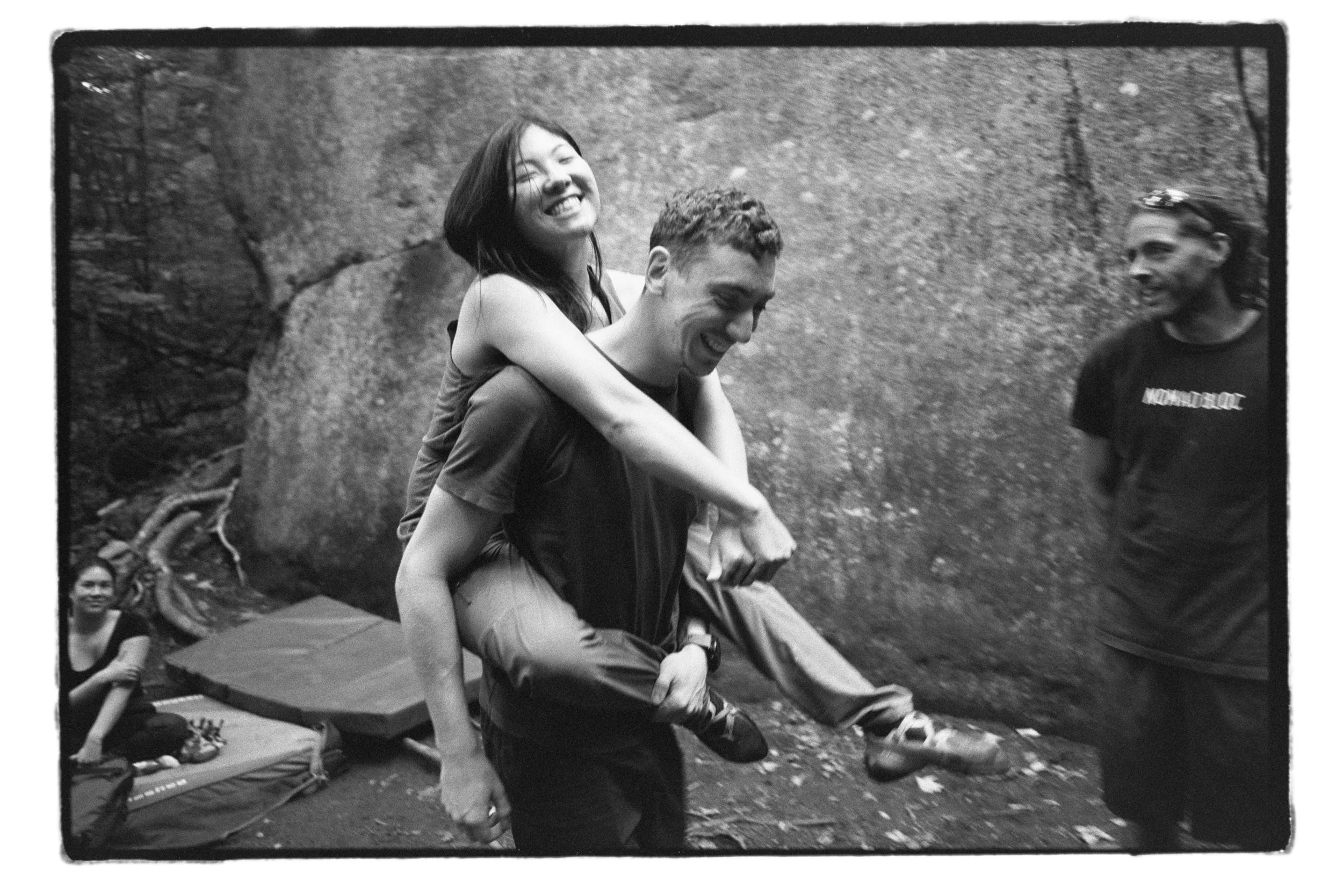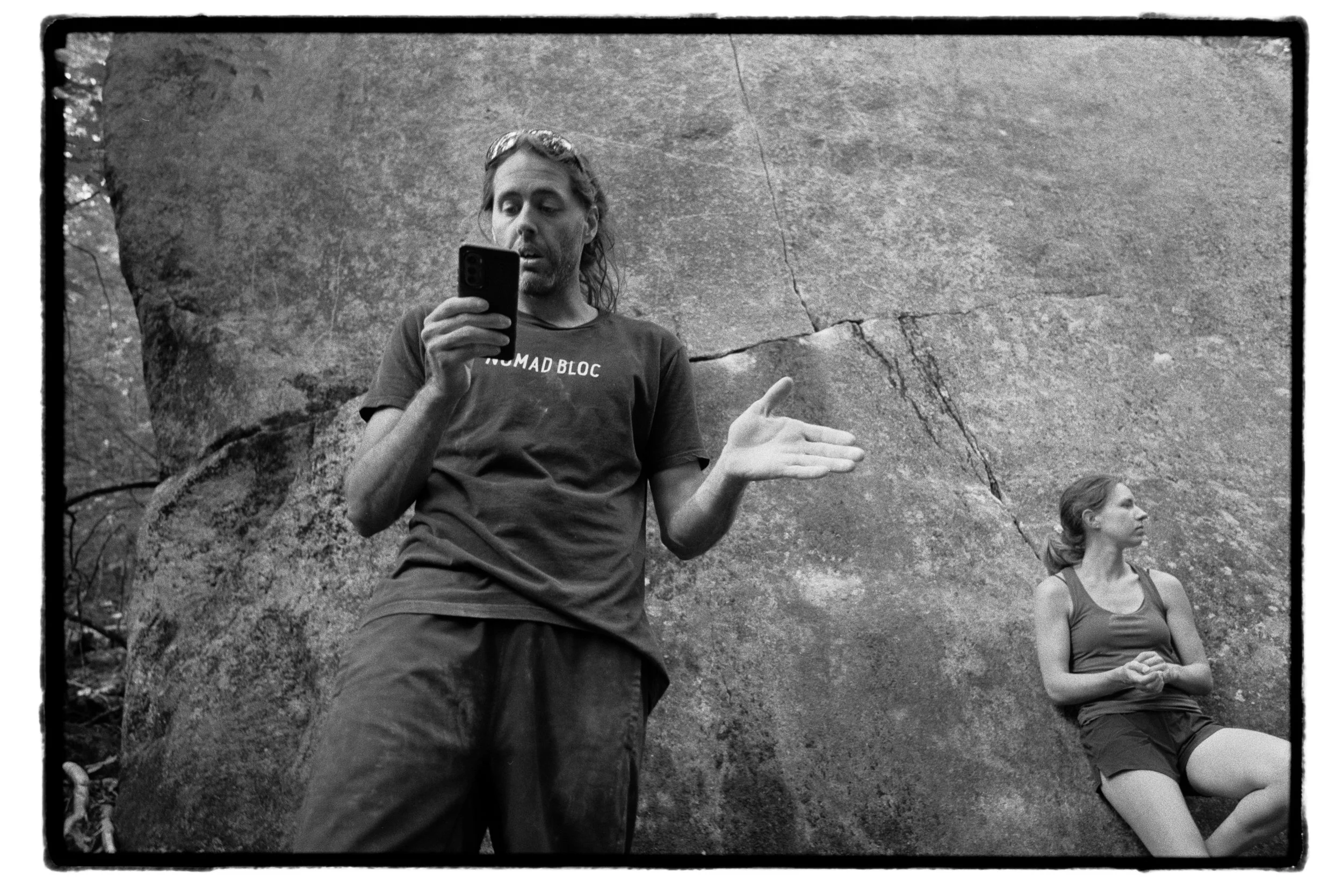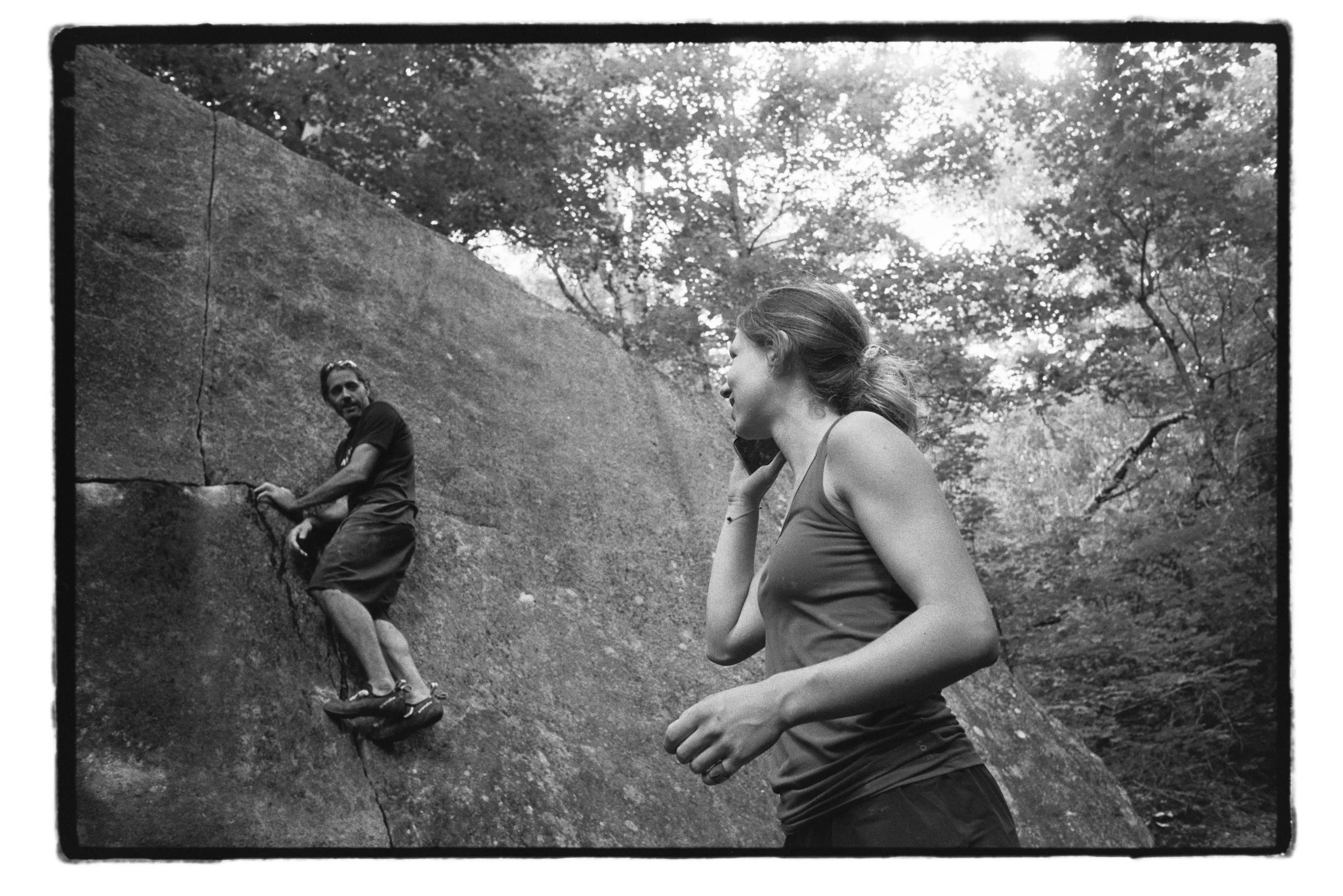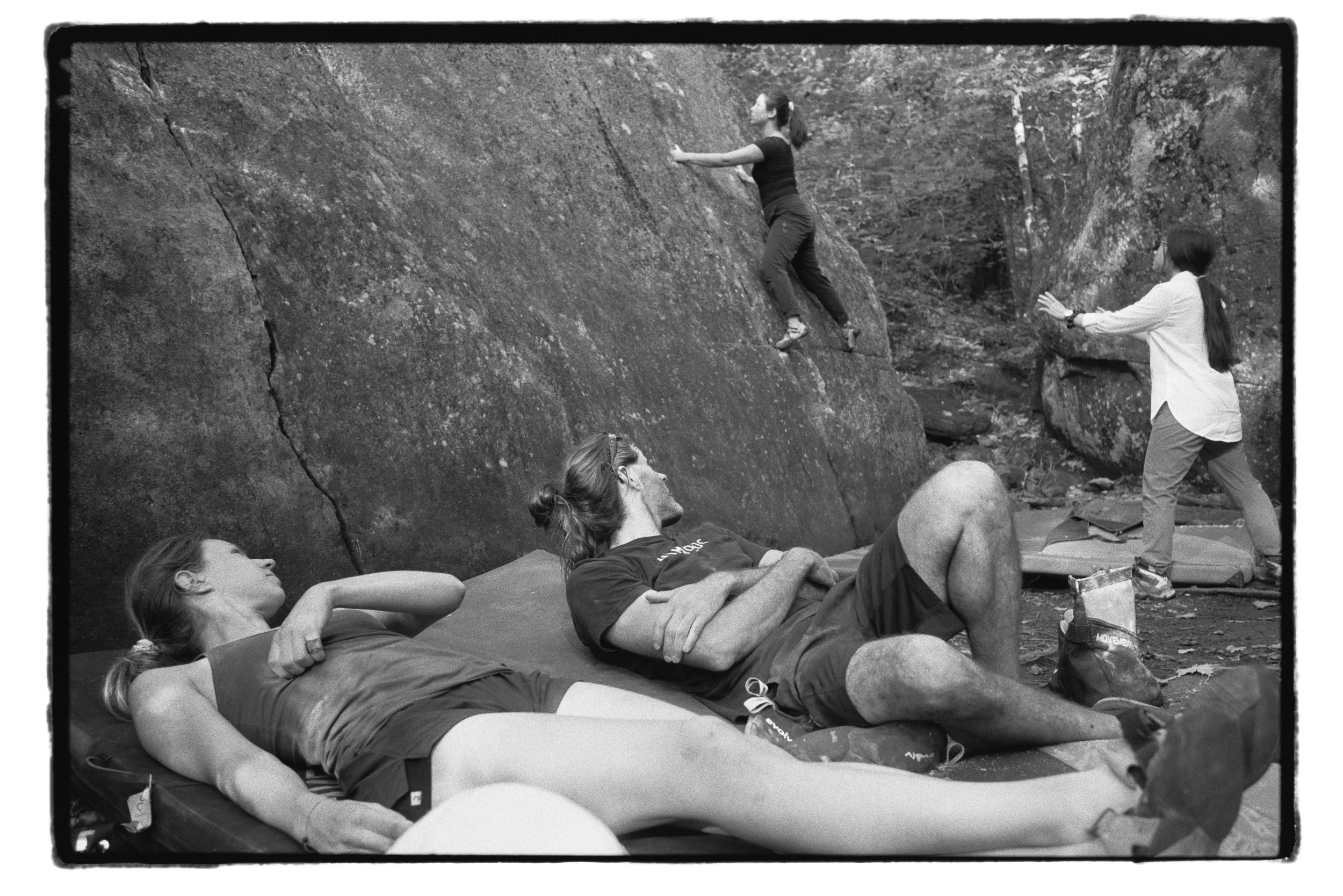Val David
In the summer of 2023 I documented a group of Montreal-based boulderers I met at Café Bloc on their day trips to Val-David.
Boulderers will recognise this stance as one that climbers adopt between climbs to stand on rocks and avoid getting mud on their climbing shoes, since it is so imperative for the rubber sole -especially the tips- to be dry when attempting to send (climber lingo for completing) a climb. Some climbers will bring their slippers with them or slip back into their day shoes, as we can see in this photo. Louise Classique (V6) , Les Dames.
The face of satisfaction and exhaustion after completing a climb. When a climber completes a boulder it's called a send. If they send the boulder on their first attempt, it's called a flash. In fact, if they flash the boulder without having seen someone else attempting it, and without having prior info or "beta" about the boulder, they're said to have "onsited" the boulder. It's satisfying, but often a sign that this boulder is too easy for them. The opposite would be a boulder that a climber will project, meaning they'll work on it for many attempts over many climbing sessions, sometimes over months or years. Nickel (V3), Les Hommes.
Visualizing and miming the moves for a challenging climb is crucial to sending it in as few attempts as possible. It prevents mistakes and saves energy and skin.
Dave, a much more experienced climber, and a routesetter at Café Bloc, shares his knowledge to a group of relatively new climbers. Nickel (V3), Les Hommes.
Flappers, bruises, and shredded tips are usually what forces a climber to end their session. The climbers who ignore skin pain are often the same ones who end up good enough to compete professionally. Sharma Dyno (V10), Mont-King.
Brushing the chalk off the rock from previous climbers increases friction, and chances of sending the climb. Sometimes, though, the help it brings is more psychological than anything else.
It iss very common to ask someone to film an attempt at a challenging climb, in order to either review that attempt and understand how to improve it, or to keep as a proud souvvenir and/or post it on social media.
Reviewing footage of different attempts at a climb. Morgane and Zita had met at Cafe Bloc two years prior. A tight group of friends from different parts of the world formed around them after they kept running into each other at the indoor climbing gym, because they had similar climbing schedules. They do all sorts of climbing and non-climbing related things together now -movie nights, potlucks, boardgame nights, and even trips within Canada or abroad. Many university graduates who might have worried about how they might keep making friends once they leave school find it surprisingly easy to be part of a community once they start meeting climbers. Even though it is not a team sport, climbing lends itself to discussion and collaboration, which inevitably leads to making fun human connections.
Dave taking a break on this supposedly easy slab. A slab is a climb on a wall that is less steep than vertical; they are extremely technical, and their difficulty often stems from how frightening it is to climb them. Le Lounge (V2), La Bleue.
Debates on whether to go to another cluster of boulders or whether to head back to Montreal.
The most frequent injury climbers suffer from is a finger pulley injury. This makes warming up a quasi-sacred pre-climbing ritual.
There are over 400 bouldering climbs around the Val-David Regional Park of Val Morin so there is always more exploring to do, no matter how long one's been climbing there.
When arriving to a new site at Val-David, whoever has the bouldering guide book on them pulls it out, flips through to the chapter for the appropriate cluster of boulders, and tells the others what climbs they think the group can tackle, based on the levels of difficulty indicated (or grades -from V0 to V10 and more, even up to V17 in some areas of the world.)
A less common method to avoid stepping in the mud.
Dave trying to give directions by phone to someone who's just arrived at the edge of the Val-David Regional Park. Some boulder clusters are a few minutes walks away from each other. Others are a 30-minute walk away. Le Lounge (V2), La Bleue.
Climbing chalk, usually magnesium carbonate, is applied on the fingers before every attempt at a climb, to reduce sweating and slipping. It's also expensive, so when someone offers it for free because they get it by the bucketful, people stock up!
Few boulders require fewer than 2-3 crashpads, so each climber who owns one brings it along, as long as they can fit in the car..



